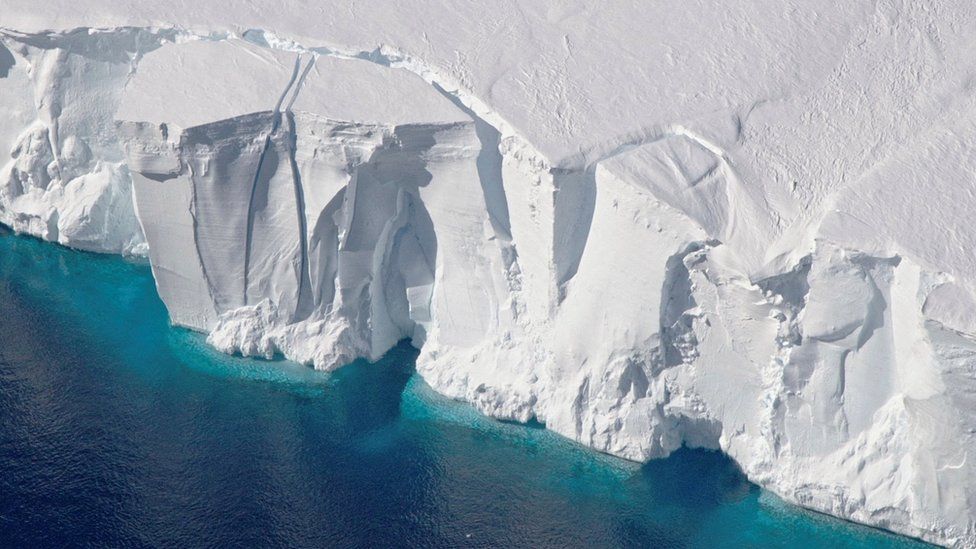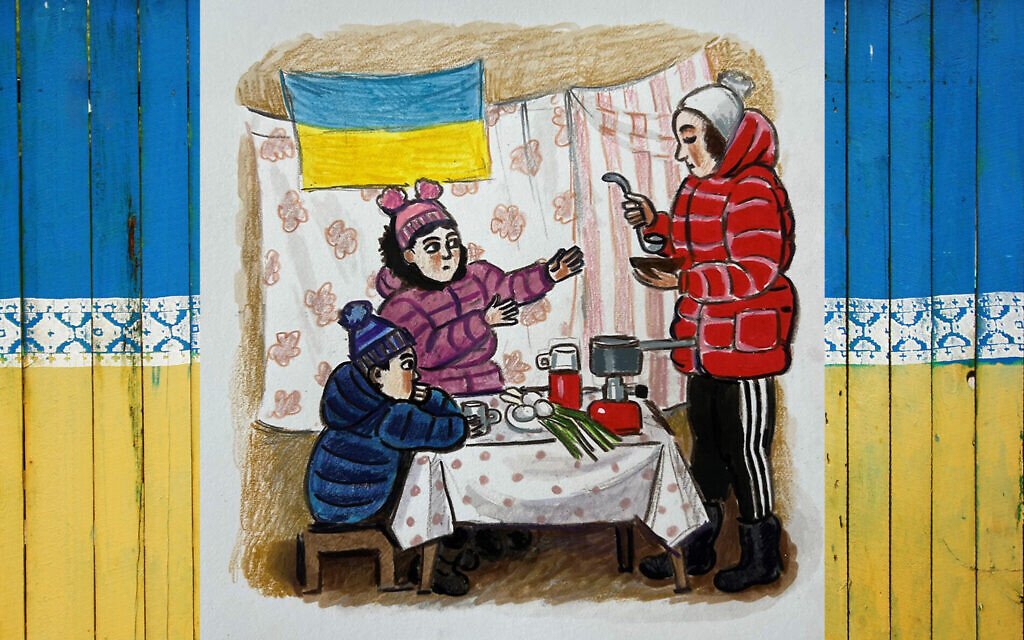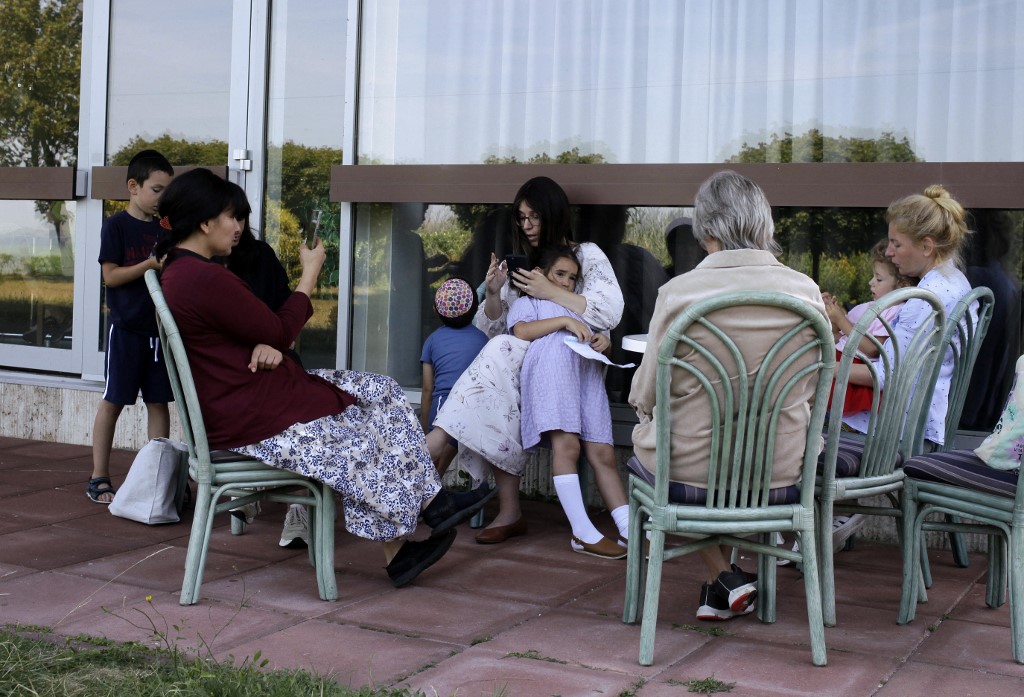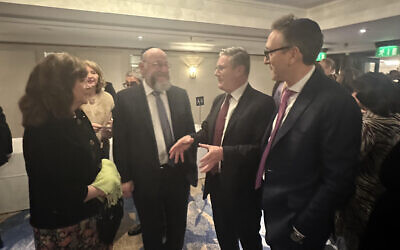
(AP)
Russia is using a fleet of older, poorly insured tankers to sidestep Western sanctions on its fossil fuels, raising fears of a potentially catastrophic accident or oil spill as the Kremlin works to finance its invasion of Ukraine, policymakers and environmental advocates said.
The worries have been especially acute among countries on the Baltic Sea, a shallow body of water that is a northern route for Russian oil shipments. Navigation there can be a challenge, especially for crews unaccustomed to its icy winter conditions. After restrictions on Russian oil exports were imposed in December, old oil tankers with no record of previously sailing through that route started appearing in the narrow Gulf of Finland that leads to St. Petersburg, Finnish officials said.
The safety concerns were alarming enough for Finnish authorities to increase drills and training for an emergency response to an oil spill or other environmental catastrophe, said Commander Mikko Hirvi, the deputy head of the Finnish Coast Guard district that includes the Gulf of Finland.
“We have enhanced our readiness,” Hirvi said, saying that the Coast Guard also has gathered the necessary equipment to address a disaster, such as floating spill containment booms and ships capable of gathering oil spilled into the sea.
Oil and gas exports are the lifeblood of the Russian economy, and for much of last year, Russian fossil fuel revenue was robust, because the invasion of Ukraine drove up prices. That’s why the United States, the European Union, Britain, Japan and a handful of other countries agreed to impose a price cap on Russian crude oil exports last year. Many countries have also imposed outright bans on Russian oil imports.
The restrictions have led to a dramatic shift in the ships willing to load oil in Primorsk and other Russian ports on the Gulf of Finland. Now decades-old tankers that would otherwise have faced the scrap heap are coming through the Baltic Sea, staffed by crews officials fear have little experience with the crowded, shallow and icy conditions of the waterway. The tankers are also increasingly inadequately insured, experts say, raising the prospect that in the event of an oil spill or collision, there wouldn’t be enough resources to mount a rescue effort.
Though there have not been any environmental incidents reported, even a small problem could be disastrous in the Gulf of Finland, whose shallow depth and fjordlike coastline would make cleanup extremely difficult.
“When we see new vessels which haven’t been operating here before, we really don’t know the crew competence in ice navigation skills,” Hirvi said. “The potential risks are there, and they are higher than before.”
The aged vessels sailing through the Gulf of Finland are part of a broader reconfiguration of ships that serve Russia’s fossil fuel exports. A growing fleet of tankers with shadowy ownership — shell companies in the Middle East or Asia that don’t appear to have previous shipping experience — is helping Russia legally move its oil exports to India and China, which haven’t imposed any sanctions on Russia.
And a “dark fleet” of tankers — ones that sometimes shut off their transponders to obscure their movements — has shifted its market from long-sanctioned Venezuelan and Iranian oil to oil from Russia, in an illegal effort to sneak the fuel past restrictions. Russia itself doesn’t own sufficient tankers to meet its needs, and Russian-owned ships could face more sanctions than ones whose ownership is less clear.
Russia’s efforts have yielded mixed results, with its oil export revenue down 42 percent in February compared with a year ago, according to figures released Wednesday by the International Energy Agency.
The Blue Sun drifts off
The older ships sometimes run into trouble — as Spanish authorities found out on March 4, when the crew of the Blue Sun, a 19-year-old tanker, sent out a signal declaring the ship’s engine had failed and they were drifting near the Strait of Gibraltar.
The ship, old enough to be in a scrapyard, had been purchased by a Vietnamese company just days earlier and registered its destination as Russia’s Baltic Sea port of Primorsk, which doesn’t appear in records of its previous travels. Vietnam’s close ties to Russia date back to the Soviet era, and the country has not imposed any sanctions on the Kremlin.
Around 11:45 a.m., the Spanish coast guard deployed a bright red tugboat after receiving a distress call from the Blue Sun, whose engine had shuddered to a halt when its sailors were switching fuels.
When the rescue ship arrived, there was more smoke than usual coming out of its smokestacks, said Pedro Echeverría Ibáñez, a spokesman for SASEMAR, the Spanish maritime search-and-rescue agency.
The ship — which in recent photos sported “NO SMOKING — PROTECT THE ENVIRONMENT” in giant red and blue letters across its bridge — was drifting slowly to the southeast, open-source ship tracking data compiled by FleetMon, a tracking service, shows.
After about 2½ hours, the crew fixed the problem and the ship resumed its course to the Gulf of Finland, where it sat for days in a narrow band of international waters 30 miles southeast of Helsinki. On Wednesday it sailed to Primorsk, one of Russia’s biggest oil exporting ports, according to the tracking data.
Navigating the Gulf of Finland
In the tighter area of the Gulf of Finland, an engine failure such as the one the Blue Sun experienced off the coast of Spain could be riskier, experts said, although they also said such problems are routine and typically manageable.
The Gulf of Finland, which forms the easternmost tongue of the Baltic Sea, is just 30 miles wide in some areas, with traffic to and from Russia confined to an even tighter band of water pinched between Finnish waters to the north and Estonian ones to the south. The gulf is crowded with ships and, close to Russia, ice — a navigational obstacle course at this time of year.
“We have very little sunlight from November to February. We have five, six hours of daylight and the rest is dark,” said Veli-Pekka Tynkkynen, a professor who focuses on Russian energy and environmental policy at the University of Helsinki.
And since the water averages just 125 feet deep in the area, a spill would be like letting a large amount of oil into a small bathtub, environmentalists say.
“What is a concern is local knowledge,” said Captain Johan-Elias Seljamaa, the deputy commander of the Estonian navy. “The Baltic Sea and especially the Gulf of Finland is really confined. If you don’t have experience navigating in these waters, it’s a higher risk.”
The Blue Sun appears typical of the kind of ship that has been appearing in Russian ports after the export restrictions hit. Until the end of February, it was owned by Sea World Management, a Monaco-based company, according to public record. Now it is registered to Hung Phat Maritime Trading, a Vietnam-based tanker company. Last month, Spanish authorities detained a different ship that Hung Phat owns, the Elephant, after linking that tanker to a transfer of oil they believed violated European sanctions.
Hung Phat could not be reached for comment. A person who picked up the phone at Sea World Management declined to comment.
More tankers covered by “unknown” insurers
Following the Blue Sun’s sale, the status of its insurance is no longer clear in public registries. A growing number of tankers appear to be inadequately insured, a separate and mounting risk, experts say. That means there might not be the resources to pay for the massive cleanup of an oil spill.
Transporting Russian oil through international waters to countries such as India and China that have not imposed sanctions is not illegal. But oil shipments priced higher than the cap can no longer be covered by the handful of major insurers with enough resources to pay for emergency efforts following an environmental catastrophe, since those insurers are based in countries that have signed on to the restrictions.
No one else “has deep enough pockets to cover against a major oil spill,” said Lauri Myllyvirta, the lead analyst at the Center for Research on Energy and Clean Air, a Finland-based environmental research group that has been tracking Russian energy exports.
The month before the invasion started, 19 percent of tankers leaving Russian ports were registered as being covered by “unknown” insurers, typically a sign of inadequate or nonexistent insurance, according to data from Myllyvirta’s group. So far this month, the share has risen to 45 percent, and it will probably rise further as policies lapse and cannot be renewed, he said.
The risks are increasing, he said.
“It’s an incredibly vulnerable body of water simply because of the tiny volume of water compared with other seas or oceans in the world,” he said. “That just means that a major oil spill could be an even more serious catastrophe or incident.”











